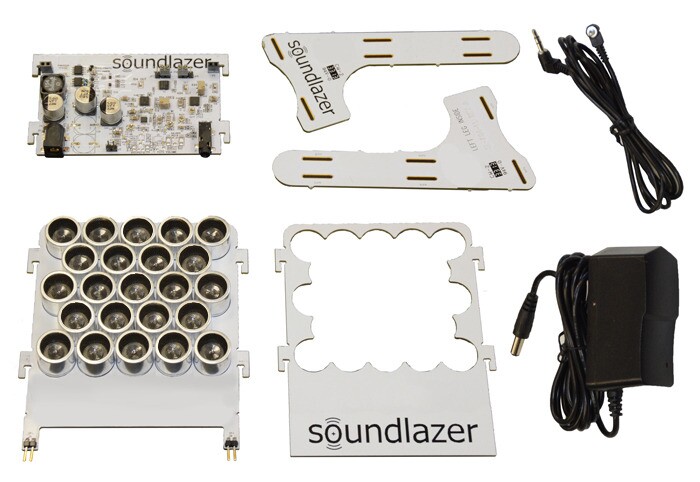The creator of the pocket-sized Soundlazer directional speaker has revealed a more cost effective way for sonic scientists to get up to all sorts of narrow beam larks with friends. The new Snap does away with the funky red aluminum outer casing and ditches the complex digital signal processing in favor of a simple snap-together frame, board and ultrasonic transducers.
Like the original Soundlazer, the Snap makes use of ultrasonic carrier waves to deliver audio to listeners in a focused beam, meaning that the system can operate in a crowded room but only the targeted listener will hear the sounds transmitted through the device. But inventor Richard Haberkern wanted to bring the parametric speaker technology to tinkerers and hackers at a lower price point than the SL-01 (which currently sells for US$275 fully assembled).

Where his original SL-01 sports an array of 39 piezo ultrasonic transducers responsible for the device's directional audio beam, the Snap has only 23 – yet is reported to benefit from improved sound quality thanks to the inclusion of a custom-designed audio filter. It comprises the basic electronics needed for the system to run in a form factor that snaps together to make a small standup unit that can be plugged into a source music player via 3.5 mm audio jack.
Following the enormous success of his first Soundlazer Kickstarter campaign, Haberkern has returned to the popular crowdfunding platform to launch the Snap.
The early bird pledges have already gone, so backers will now need to stump up $149 for a tested and ready to rock Soundlazer Snap. Each Snap will be accompanied with all source files, including schematics and a parts list, to allow hobbyists to take the concept beyond what's already offered. If all goes to plan, shipping is scheduled to start in February 2015.
Have a look at the Kickstarter pitch video below.
Sources: Soundlazer, Kickstarter







